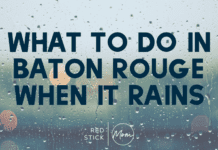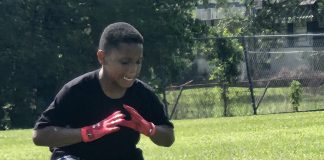Indications of Self-Injury – from a Former Cutter, to Parents
[Note : this post contains references to self-injury that might be upsetting for some readers.]
*
*
*
I sit at the “hand table” with my occupational therapist. I’ve come a couple times now, for sharp thumb pain that makes it so I can’t lift anything heavy: 48 pounds of dog food, our 8-year-old, a computer bag, a bottle of Diet Coke. The therapist’s face is a study in compassion as she lifts and measures and palpates my range of motion, my thumb-strength, my swelling. Then she turns my hands over, and her face goes silent. I watch her eyes trace the map of scars up the insides of my arms until they disappear into my sleeves.
“What happened here?” she asks quietly.
I make my voice and eyes earnest. “I used to train tigers.”
“WUT.” She says it like that, just the way you hear it when you see it in a gif, that visual incomprehension I’ve never actually heard out loud. There it is, voiced: “WUT.” Her eyes are perfectly round, like an astonished child in a book of fairy tales.
“Yep,” I tell her, holding my arm out closer for her inspection. “Two hours of tiger-training every day.”
“Nunh-unh,” she goes, “No way.”
“Way.” I am matter-of-fact, nothing to see here, ¯\_(ツ)_/¯, and I can tell she doesn’t believe me but we start talking about former jobs, and soon enough we’re laughing about the things we used to do for minimum wage.
Only … once we have quipped our last quips and “see you next week”ed and I have climbed into my car, I lean my head back and close my eyes for a minute.
I had to practice that reply, perfect the tone of studied insouciance and “you can believe me” eyes, forcing myself to stare into the mirror until every last shadow of hooded self-protection had retreated and even I could almost believe myself.
I practiced. Where should I put the emphasis? I used to train tigers? or I used to train tigers? Or maybe a different sentence: I pulled a pot of boiling water down from the stove when I was 3; – or Let me tell you, there is a very. good. reason. it’s illegal to keep Big Cats as pets; – or Shark bite! August 1979, you can still find the article in the local paper if you look through their microfilm archives!

One hand on a hip, a one-shoulder shrug. The voice had to lilt a little, had to give a self-deprecating near-laugh ofgenuine amusement. I had to practice. I could never improv the down-play, Kevin Kline’s dry “Alex always had hairy wrists.” My eyes would give me away, skip to the side, blink too many times. They would give away the shame I kept hidden unless I was completely alone, knowing talking about it would make me a freak.
*
March is Self-Harm Awareness Month, an initiative that began around the turn of the 21st century. It has become increasingly important to maintain awareness of self-injury: causes, behaviors, risks, means of detection, and therapeutic approaches for healing. Sadly, that awareness is all the more necessary now as the generations being brought up by my generation have access to all the world’s information, good and bad, including support groups for recovery … and for reinforcement (a .005-second Google search can bring up links to pro-anorexia “buddy-system” chat rooms, and I shudder to think what kinds of “support networks” Quora or Reddit or other fora have for for self-harm).
Awareness begins with hard questions and some hard truths. But before the questions, even, it has to begin with recognizing our own fallibility. That is challenging, humbling, and can be frustrating. As parents, facing something our kids are going through, we might feel enraged or desperate at our own helplessness. But as one UK site declares, Awareness Is Prevention.
At least the first step.
1. What even is Self-Harm? Who would hurt themselves on purpose??
Self-Harm is not a diagnosis, though it can lead health professionals to diagnose other conditions like mood disorders, eating disorders, personality disorders, and/or anxiety disorders. (And some self-injurers have no diagnosed disorder at all). Officially known (and catalogued in the DSM-V-TR) as “Non-Suicidal Self-Injury” (NSSI), self-harm refers to a person’s inflicting injury on themselves without the intention of committing suicide. People self-harm in many ways and using different tools: cutting, picking, piercing, scratching, burning, carving words or symbols onto the skin, self-biting, head-banging, self-hitting or punching, embedding objects under the skin. Sexual promiscuity and intentionally exposing oneself to dangerous situations can also make the list, though these behaviors are not usually the primary means of self-injury.
You might be surprised to learn that people of every age and walk of life constitute a percentage group of self-injurers. Statistics show that NSSI is more prevalent in girls (30%) than in boys (10%); and that, while it tends to begin in adolescence, it is both more common and more frequent among people in their 20s. The first almost-quarter of this century has seen a huge uptick in documented cases of NSSI, which increased by 166% from 2001 to 2015.
Also, since 2009, cutting – the most popular method of NSSI – has increased among 10-14-year-old girls by 18.8% each year. That’s fifteen years of 18.8% increase. So if you started with ten girls in 2009, you’d have …
(2009) 10 x .188 = 1.88 + 10 = 11.8
(2010) 12 x .188 = 2.25 + 12 = 14.25
(2011) 14.25 x .188 = 2.7 + 14.25 = 16.92 (17)
(2012) 17 x .188 = 3.18 + 17 = 20.18
(2013) 20 x .188 = 3.76 + 20 = 23.76
(2014) 23.76 x .188 = 4.46 + 23.76 = 28.22
… and that’s only after the first five years – nearly 300% more cutters than in 2009. Assuming a constant increase of 18.8% each year, the total in 2023 would be 132.92, or thirteen times the number we began with. One thousand three hundred percent. Can you imagine any other condition afflicting teenagers that would go so misunderstood for so long? It’s tough to swallow.
Being aware as a parent in 2024 takes a far different form than it did for my parents, in the (generally mental-health blindered) 1980s. I am putting this post out there so both sufferers and parents know that it exists, and that there are resources 

2. “My daughter is cutting herself. How dangerous is it? Is she suicidal? Should I take her to the ER?”
My response as a parent is – you know your child. Does your heart, your gut, tell you that she needs to go to the ER? If so, take her, and shove Dr. Google and Dr. Me aside until you are able to have a medical professional evaluate her condition and give you peace of mind about her health and safety. Call 911 if the cut looks deep or if you, as her parent, know that you need to call 911. You are the expert here, and the authority. Assuming that your child is under the age of 18, and barring minor emancipation, you have legal authority over your minor child’s medical treatment, and it is especially important to empower yourself when it comes to this question, because your teenager might challenge you. [Please note: I am a researcher, not a lawyer, and as with medical advice you should consult an expert in the field rather than any person on the Internet.]
Now. My response as a former cutter is – probably not. Cutting (with a knife, scissors, a blade, or a sharp object of glass/metal/hard plastic/whatever) as a form of self-injury is generally not a suicide attempt. The website ChildMind.org explains, “People who self-injure aren’t trying to kill themselves, they are trying to alleviate some emotional distress they are feeling.”
This does not mean that you shouldn’t take it seriously, whether the cut is a mere scratch or a deep gash.
How dangerous is it? The first several times, it might look like something else – a paper cut or ten, a cat scratch, a kitchen accident. And, for my money, most cutters will blame any visible evidence on one of those things. Physically, it tends not to be as dangerous as a parent can fear (but again, this is my invitation to you as the parent to acknowledge your fear and take action). Even if the injury from self-injury doesn’t pose a huge physical threat, though, it represents profound emotional and psychological pain that the person doesn’t know how to handle or express in another way. The kind of emotional turmoil that leads to self-injury is a health risk in and of itself; and even if the “reasons” for it seem minor to you as the parent, they are worth taking seriously.
Also, it’s important to know that cutting – while not necessarily a sign of suicidal ideation – may become more dangerous than the cutter realizes or has anticipated. Cuts can quickly go too deep, and anything startling or unexpected can derail what the self-injurer originally started doing. (I had to have stitches on more than one occasion, and almost certainly should have had stitches more often than I did.) Then, too, recent studies have shown a higher incidence of suicide among non-suicidal self-injurers than was previously understood. So don’t assume it’s nothing, but try not to give it the weight of a crisis situation; that approach will only add to the stress your daughter is feeling (stress is one of the main triggers of self-injury), and may close the door on any attempt you make to talk with her.
3. “I found a lighter in my kid’s desk drawer, and he has welts on his forearm that look like burns.”
Your child might be burning himself. Though cutting is the most common form of self-injury, burning is another way to achieve the same kind of release.
Some kinds of suffering surpass a person’s, especially a young person’s, ability to verbalize their feelings. Self-injury is a coping mechanism when words are inaccessible or insufficient. The fact that your child lets you see these welts – that they aren’t somewhere else on his body, or concealed in long sleeves – may be an indication that he is using self-injury as a means of communication. Can you open yourself to what he wants to tell you? Can you sit down with him and say, I read this article today about people who burn themselves when they can’t say what’s going on and let him reply?
He may withdraw, and you may have to let that be what it is for the first conversation. On the other hand, I think it’s OK to press him as long as you aren’t putting him into a position where he feels responsible for your feelings. He has let you see the wounds. “Hey, kiddo,” you could say, “It looks like you’ve burned your arm. Can I help you take care of it so it doesn’t get infected?”
Open the space for him to talk to you. And then really listen – to his silences as well as his words. Be present for him. You have no idea what a gift that is to someone feeling so alone.
4. “My teenager has been wearing cold-weather clothes (long sleeves and pants) all the time lately, even in the Louisiana heat and humidity, even on the very hottest days.”
Many cutters choose concealing clothing. Season-inappropriate attire is one of the main signs, actually, that your child might be self-injuring: as Nationwide Children’s Hospital explains (this is the same link posted above under #1), “many who self-injure hide their scars and don’t want others to know about this behavior.”
In my experience, cutting was both a liberating act and one that horrified me. Liberating, because it gave me control over the body I held in lifelong enmity. I did this. Nobody else got to decide for me either to do it or to stop.
Horrifying, because even though the time spent cutting gave me an endorphin rush that lifted me out of a state of pain, afterward I still had to “come down” – smashing back into the pain again, which sometimes felt worse than before. I often felt tremendous shame, and fear, at the cuts I had inflicted. I didn’t want anyone to see; I just wanted to find a way to deal with feelings I didn’t have other tools to deal with.
So your teenager may be self-injuring, and you need to gather more information. Are they having trouble changing in the locker room for PE class? Or suiting up with the other kids for their sports team? If you go to the pool, do they join you in their swimsuit or sit elsewhere, refusing to change? Have their teachers mentioned any new or atypical behavior – secrecy, a change in general mood or affect (do they just seem to feel “low” at school), spending more time alone? People around your child, including you, may notice something without knowing you’ve noticed something. Chances are, if one or more of these typical signs are present and you’re wondering about self-injury, you’re onto something.
5. “How can I tell if my child is self-injuring? I don’t know what to look for!”
The patterns in #3 and #4 above are good starting points. Does your child have unexplained injuries or wounds? Does s/he seem to have a bandaged spot on their body all the time? Do they seem to hide parts of their body (wrists, thighs, abdomen) they didn’t used to?
Other typical indicators of NSSI include:
- not participating in their usual social activities
- isolating (more time in their room, or in the bathroom, for example)
- collecting sharp objects like knives, blades, broken glass, safety pins, etc.
- talking about self-injury
- sporting new or suspicious scars
- having wounds that don’t heal, or that worsen
- giving strange or implausible explanations for injuries (cat scratch, sweater got stuck on a nail, had to extricate something from a thicket of inch-long thorns)
- online search history with terms related to self-injury or websites dedicated to the topic one way or another
- social media posts that make your parental “spidey” senses tingle (do they quote songs or poetry about self-injury? Do they follow people who post about self-injury?)
- spending more time with friends who (also) self-injure, or following certain SnapChat channels or Reddit threads that reference self-harm, whether behaviors, tools, or “how-to” activities
- wearing wristbands, bracelets, oversized watches, or other lower-arm coverings all the time, especially on the arm opposite the dominant hand
This list isn’t exhaustive and someone could conceivably have one of these signs and not be self-injuring; or have none of them and indeed be self-injuring. Listen to your mama-heart. I know teenagers can feel very far away and foreign: I think my Mom didn’t recognize me between the ages of 15 and about 35 (only partially exaggerating). Those are years I can’t get back, and if I had known how to talk to her, or she had known she could talk to me, we might never have lost them. Teenagers don’t tend to think about that side of the equation. Now, as a mom to one Big Kid and one Tween, I face this anxious ache at the thought of losing my boys to anything remotely resembling my own struggle.
6. “I’m afraid if I try to talk to my daughter, she’ll shut me out even more. How can I help?”
Our society handles questions of mental health more openly now than when I was a teenager, and I see only good in that evolution. I always feel grateful when a student opens up to me about their struggles with anxiety or being on a new med; I have had profound and deeply moving conversations (with female students, especially) about newly diagnosed ADHD and how they can finally, newly, function. Students have spoken with me about family or relationship traumas, about brokenness so profound there are days when they can’t speak in class. And these experiences are not always diagnosable, even in 2024. Some medical practitioners have trouble recognizing signs of depression, or panic attacks, or social phobias – all of which are likely to affect teens and young adults in their 20s.
To start with, know that you are not at fault. Hard truths: there often isn’t one single etiology. The causes can be multiple and messily intertwined, and even as the most devoted and connected parent you may not know all of them – and your daughter may not be able to articulate them all, either. At Cornell University, the College of Human Ecology has a fantastic website dedicated to defining, preventing, and demystifying NSSI.
Another important thing I hope you will have understood is that it isn’t your daughter’s fault, either. Self-injury is – in a twisted logic – a way to care for herself. Having a wound means she can tend to the wound. Breaking the skin causes the brain to release a small amount of endogenous opiate-like chemical messengers, like hitting a “runner’s high” – or, well, having an orgasm – endorphins.
How can you help? By knowing your kid and talking with her. Make sure she knows you see her. Yelling at her won’t help. Neither will blaming her for your own stress. Heaping on guilt when she is already buckling under the weight of Big Confusing Feelings … I’m sorry to be blunt, but it runs the risk of making things worse. She needs to hear that you love her and that she is still herself, that you’re concerned but not angry with her or judging her (even if you are), and that she doesn’t have to get through this alone. You can be her advocate and her partner.
I don’t think there’s one single recipe for how to do that. Seeking therapy for yourself is a good idea. Family therapy so everyone can see there are tools to help your daughter is another one. Therapy for her is probably a must, though she might graciously decline it or lie to therapists. It’s important to go into the recovery process knowing what you could be up against, but also what possibilities await your daughter, your family, and your own mama-heart.
Finally, if she won’t talk to you or a therapist, she might still talk to someone. Crisis Text Line offers options for texting, online chatting, and WhatsApp. Their website contains a wealth of practical information and support for self-injurers and their loved ones.
Also, I think there is a reason students talk to me – I’m a relatively neutral sounding-board, and I am on their side. (I am also a mandated reporter. This means – and I let them know – that if what they tell me indicates an abusive situation or other danger to themselves, I am required by Louisiana law to report it, for their own safety and well-being.) I’m not their parent or high-school teacher; they see me twice a week; I’m wry and compassionate and it’s safe to cry in front of me. So if your daughter can’t open up to you, can you think of someone who could hear her without the family relationship or baggage?
And, even if you can’t find comfort in the thought of your baby (I know) taking her hurt to another adult, maybe you’ll see a glimmer of hope in knowing that college is a whole different bailiwick. If your self-injurer is in high school, she might find a grown-up confidante at university, someone to help her see the horizon beyond this practice. It isn’t forever.
*
I’m a parent now, and humbled to realize that I could miss the same signals my own parents did. I wanted to write this piece for Self-Harm Awareness Month to offer insights and information for any parents facing the daunting realities of NSSI – but I also wrote it to educate myself. It’s a different world now than when I was in high school. Kids have access to all manner of adult material and subject matter, you can find a YouTube “how to” video for just about anything at all, digital entertainment and social media allow for connections that can be helpful and harmful in equal measure, and the constant feed of “likes” and comments can make any kind of behavior performative. I would rather know what’s out there so I can arm myself to protect my kiddos, even from the informed position of someone who used to live inside the world of self-injury. Because that world of self-injury both is, and is not, this world of self-injury.
I don’t think my parents ever “got it.” I’m not sure I “got it,” until I finally went to therapy in my mid-30s. After many years, I have a more-or-less neutral take on my history with self-injury, but it’s still not an easy thing to explain to an outsider: the fact that I ritually, over years into the double digits, used to could open a vein and feel better.
To be clear: nothing actually felt “better.” It just kind of stopped feeling worse, for five minutes. Like any addictive behavior, it brought a certain deceptive kind of control and release, and I sought that out again and again.
Where does suffering live? In the brain? the mind? the heart? Who knows? But when a tiger bites you, night after night, deeper and deeper, its teeth singing like steel, refracting light under the silver surface of water, you have a place. It hurts. You can point to the wound. It hurts here.
I want to be able to tell my children, should they ever need to hear it, that I get it.



















